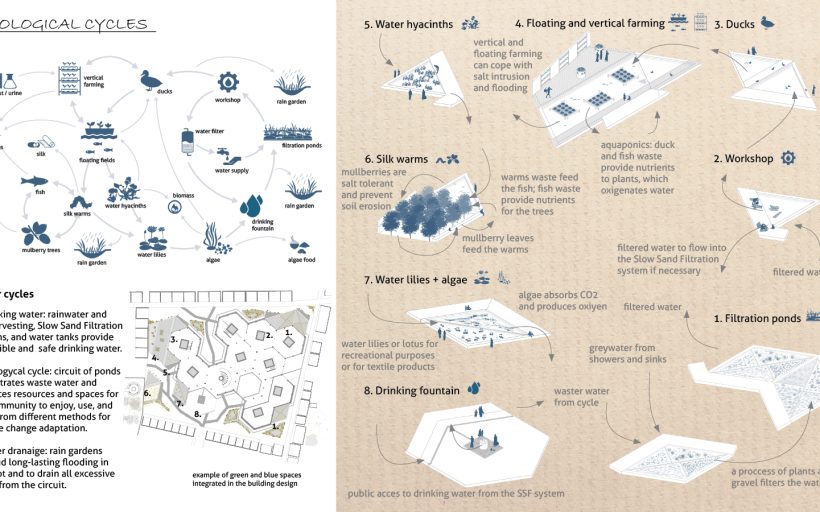Community-based architecture as a catalyst for resilience through an integrated design of building, landscape and climate
Long Description
As many others countries in Asia, Bangladesh lives and dies by the water. It is one of the areas most at risk from the impact of disasters and climate change. Likewise, the coast at the Bay of Bengal is one of the most vulnerable areas in the country. Facing a multi-hazard situation, the population has multiple and interrelated needs. Through the design of a community centre to foster resilience, the following issues are researched: first, the potential of architecture as catalyst, as an actor for change. Building, landscape and climate become integrated in the design of a self-sufficient, climate-adapted architecture which aims to be proactive in the collective empowerment and the Human Development of its users. Secondly, the configuration of not only a building, but also a design and construction strategy. A proposal which can be replicated, adapted and upgraded by each community according to its capacities and needs. Thus, this design reflects upon the following questions: Which role does architecture play in such a context? Can architecture serve as a tool to substantially improve the lives of its inhabitants?












Share on social media.
Facebook
Twitter
LinkedIn
Mail